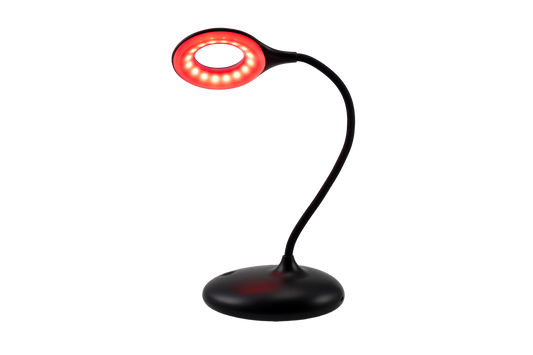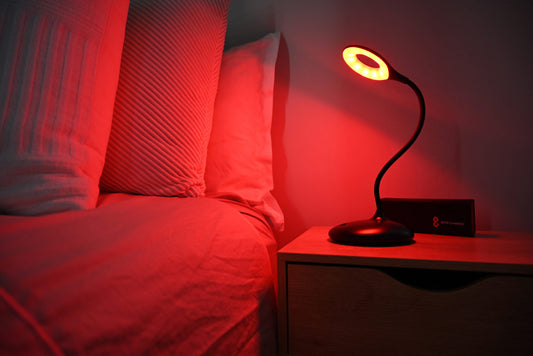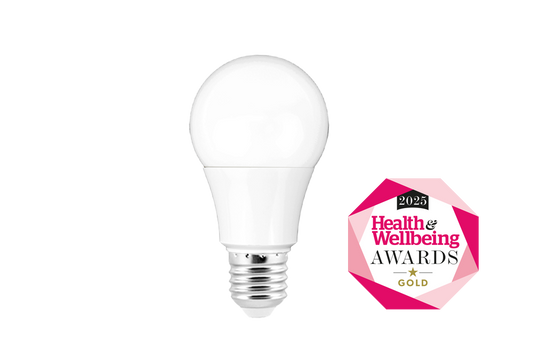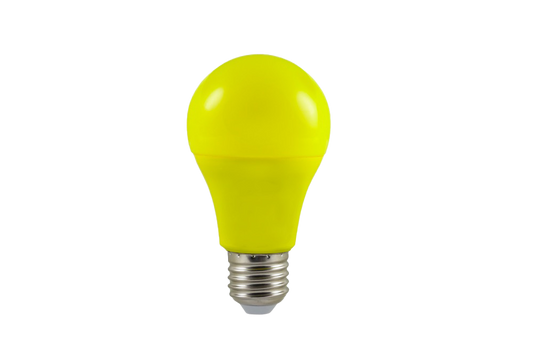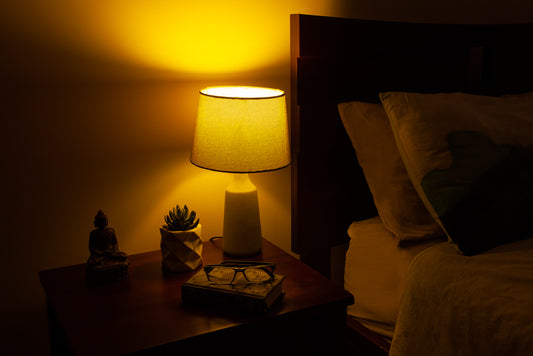Choosing the Best Lighting for Sleep and Optimal Wellness
Mark Pearce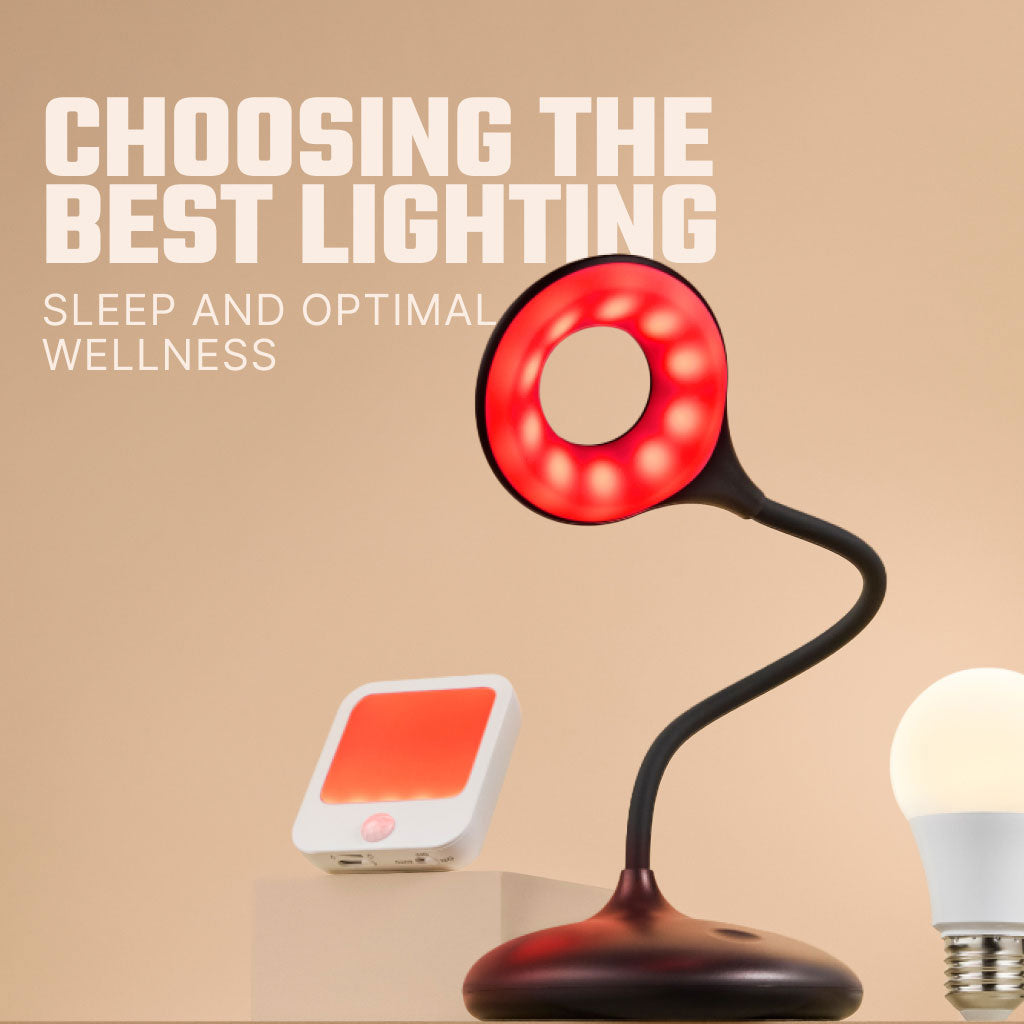
Lighting in our homes and workplaces is important for our wellbeing, sleep, and energy. It affects how we feel and function in our busy lives.
Increasing awareness of the impact of blue light on our wellbeing is growing.
“LED lights with high 460–495 nm blue content should carry the warning label “maybe harmful if used at night” - Frontiers In Photonics, October 2023
Choosing the right kind of lighting has never been more important.
In this short guide, we'll dive into the benefits of three distinct types of lighting to help you make an informed choice.
Let's look into blue light blocking lighting, low blue lighting, and full spectrum lighting.
1. Blue Light Blocking Lighting: A Game-Changer for Better Sleep
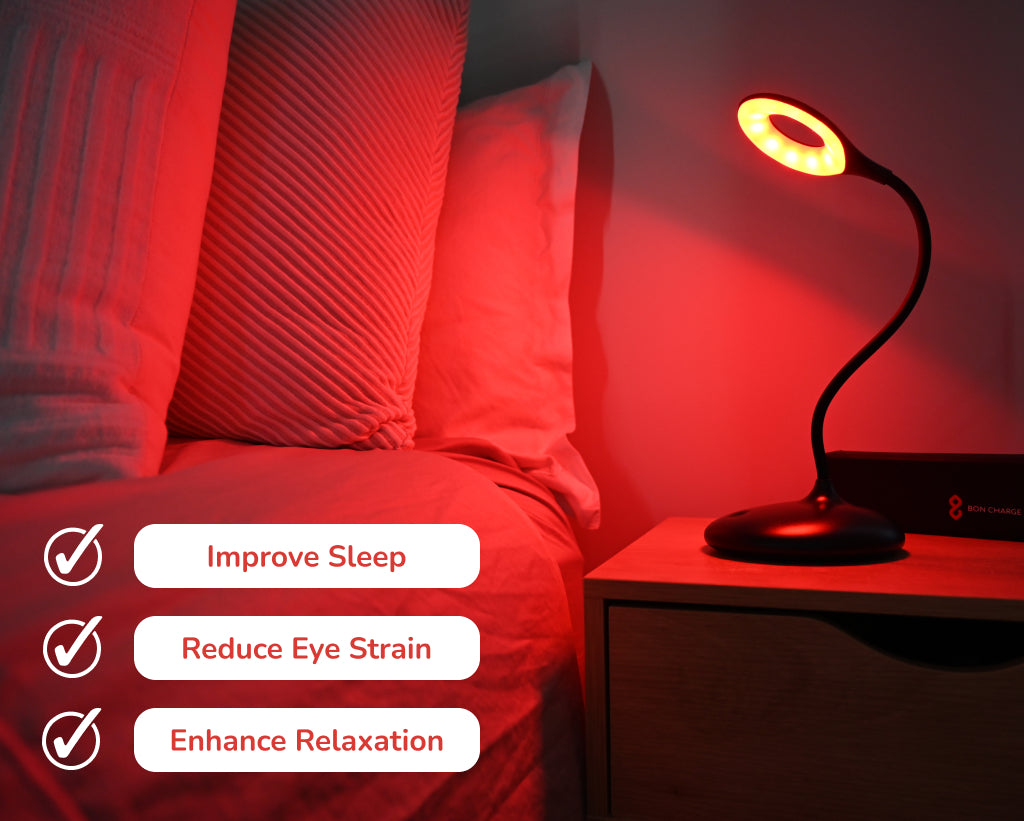
What is Blue Light Blocking Lighting?
Blue light blocking lighting is designed to filter out the artificial blue light from regular, bright light bulbs.
Exposure to blue light disrupts sleep patterns and affects overall wellbeing. Blue light blocking light bulbs and lighting are ideal for evening use. Particularly in bedrooms, living rooms, and any area where you unwind before bedtime.
This lighting emits a red light.
Benefits of Blue Light Blocking Lighting:
Better sleep: Blue light at night can disrupt melatonin production, which helps regulate sleep.
By using blue light blocking lights, you can create a calming environment that promotes the natural production of melatonin. This can help you fall asleep faster and enjoy deeper, more restorative sleep.
Reduced Eye Strain: Blue light has been shown to contribute to digital eye strain. This is becoming increasingly common due to our heavy use of screens.
Blue light blocking lighting reduces the amount of blue light reaching your eyes. In turn making it easier to relax and reducing the likelihood of headaches and eye discomfort.
Enhanced Relaxation: The warm glow emitted by these bulbs signals to your body that it's time to wind down.
This lighting can make your space feel warm and welcoming, helping you relax and forget daily stress.
Who Should Use Blue Light Blocking Lighting?
This lighting option is perfect for anyone who struggles to fall asleep or stay asleep. It's also ideal for anyone who spends a lot of time in front of electronic devices.
If you're looking to create a tranquil, sleep-friendly environment, blue light blocking lamps and plug-in night lights are an excellent choice.
2. Low Blue Lighting: Balanced Light for Daytime and Evening Use

What is Low Blue Lighting?
Low blue lighting offers a balanced approach by reducing blue light. This versatile type of lighting can be used throughout the day.
It can provide enough blue light to keep you alert during the day while minimizing the negative effects in the evening.
This lighting emits a warm, amber glow.
Benefits of Low Blue Lighting:
Balanced Day-Night Rhythm: Low blue lighting helps your body's natural clock by providing the right amount of blue light.
During the day, a moderate amount of blue light is beneficial for staying alert and focused. As the evening approaches, the reduced blue light levels help prepare your body for rest.
Energy and Focus:
Unlike blue light blocking lights, low blue lightbulbs and lighting provide a gentle boost of energy and focus.
Which makes it ideal for spaces where you need to stay productive, such as home offices, kitchens, and study areas. This lighting helps you maintain clarity and concentration without the harshness of traditional lighting.
Flexibility in Application: Whether you're working, reading, or relaxing, low blue lighting offers the flexibility to create a comfortable environment. It's particularly useful in rooms where you transition from daytime activities to evening relaxation.
Who Should Use Low Blue Lighting?
Low blue lighting is a great option for those who need both daytime productivity and evening relaxation. For lighting that won't disrupt your sleep, consider using low blue lights in your home.
This lighting can be used in every room.
3. Full Spectrum Lighting: Energize Your Day with Natural Light

What is Full Spectrum Lighting?
Full spectrum lighting mimics natural sunlight by providing a full range of wavelengths. This type of lighting is ideal for daytime use. It can help to boost your mood, energy levels, and overall wellbeing by replicating the benefits of natural light.
This lighting emits a warm white light through to a relaxing amber hue. You can adjust its color temperature to suit your mood or the time of day.
Benefits of Full Spectrum Lighting:
Increased Energy and Mood: Exposure to natural light is essential for maintaining high energy levels and a positive mood. Full spectrum lighting brings these benefits indoors, helping you feel more energized and motivated throughout the day.
This lighting is especially beneficial during the darker winter months when natural sunlight is limited.
Enhanced Concentration and Productivity:
Full spectrum light bulbs provide a bright, clear light that improves visibility and reduces eye strain. This can make it easier to concentrate on tasks. It's an excellent choice for workspaces, studios, and any area where you need to stay focused and productive.
Circadian Rhythm Support: While full spectrum lighting mimics sunlight, it's balances and supports your circadian rhythm during the day.
This lighting helps your body know when to be awake and when to wind down for sleep by giving the right signals.
Who Should Use Full Spectrum Lighting?
Full spectrum lighting is ideal for those who want to bring the benefits of natural sunlight indoors.
If you feel tired, or want better lighting in winter, full spectrum lamps can help boost your energy and mood during the day.
Making the Right Choice for Your Home
Choosing the right lighting for your home depends on your specific needs and lifestyle.
Light sources can be natural, like the sun or fire, or artificial, like light bulbs and LEDs.
If sleep is your primary concern, blue light blocking lighting is the best choice to create a restful environment. For a more versatile solution that balances productivity and relaxation, low blue lighting is a great option. If you're looking to boost your energy and mood during the day, full spectrum lighting is the way to go.
Choosing the right lighting for each room in your home can make you feel better and help you sleep better.
Remember: The key to optimal wellness is creating an environment that aligns with your body's natural rhythms. Avoiding artificial lighting, artificial blue light led lights, and some artificial green light led bulbs is important. Choosing the right lighting is also a crucial step in that direction.
Visit our blue free lighting products collection page to find out which lighting technology is best for you.

